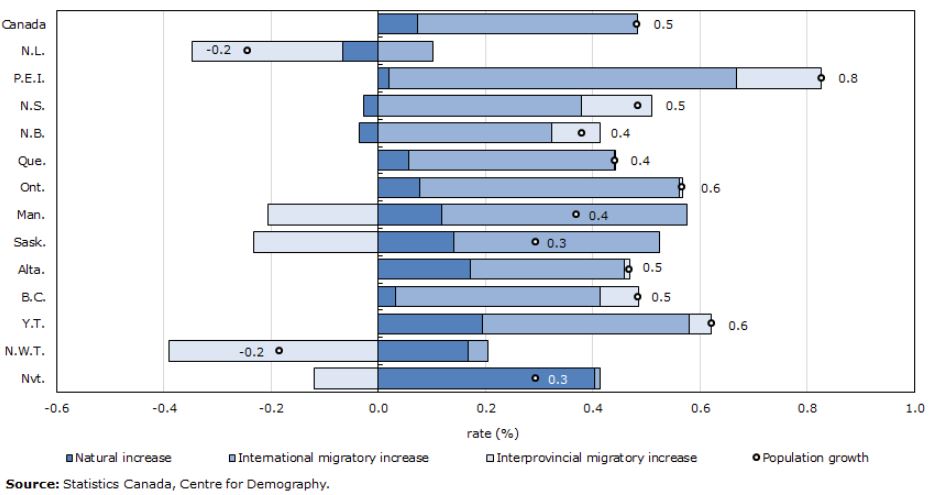Immigration continued to drive population increases in Canada’s provinces between April and July of this year — a three month period that saw one of Canada’s largest quarterly population gains ever recorded.
Overall, Canada’s population grew by 181,057 during those three months and was estimated to be at 37,589,262 on July 1, 2019.
Statistics Canada said this number represents the second-highest quarterly increase, in absolute numbers, in 48 years.
International migration (immigrants, temporary residents and returning emigrants) “remained the main driver of Canada’s population growth, accounting for 85 per cent of the quarterly growth,” Statistics Canada reported.
A record 94,281 new immigrants to Canada arrived during the second quarter of 2019.
Prince Edward Island led provinces in growth
Net international migration was positive in all provinces and in the Yukon Territory between April and July.
Statistics Canada called it the “main growth driver, reaching levels rarely, if ever, seen during a second quarter” and attributed the growth mainly to “the high number of new immigrants.”
The province of Prince Edward Island (PEI) posted what Statistics Canada called the “most rapid population growth in Canada” in those three months.
PEI’s nation-leading population increase of 0.8 per cent during the quarter was driven primarily by net international migration, which accounted for 78.4 per cent of total population growth in the province.
Net international migration was also the main contributor to the Yukon Territory’s second-place finish in terms of population growth in that same period. The Yukon’s population grew by 0.6 per cent over the quarter, with net international migration accounting for 62 per cent of the increase.
Factors of population growth in Canada’s provinces and territories, April to July 2019

Net international migration was an even greater contributor to total growth in Quebec (87.1 per cent) and Ontario (85.5 per cent) between April and July.
It also played a leading role in population growth in British Columbia (78.2 per cent) and Alberta (61.1 per cent).
Statistics Canada said net international migration helped offset interprovincial migratory losses in Manitoba and Saskatchewan of -2,802 and -2,719 people, respectively, helping both provinces finish the quarter with positive growth rates.
International migration also helped offset negative natural increases (more deaths than births) in Nova Scotia and New Brunswick, allowing both provinces to finish the quarter with population growth rates of 0.5 per cent and 0.4 per cent, respectively.
International migration was also up in Newfoundland and Labrador, though the province finished the quarter with negative population growth due to a high number of deaths compared to births and outmigration to other provinces.